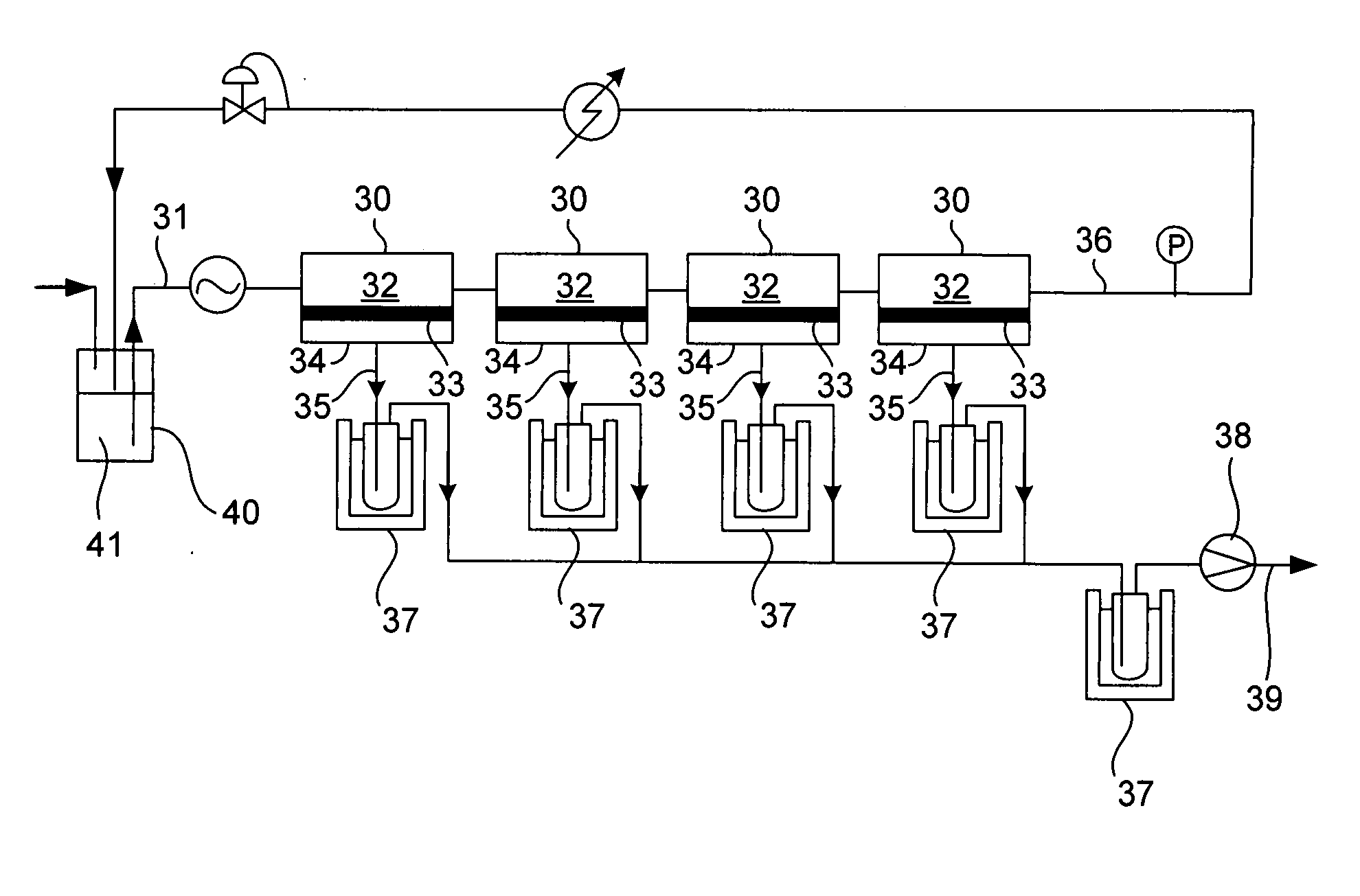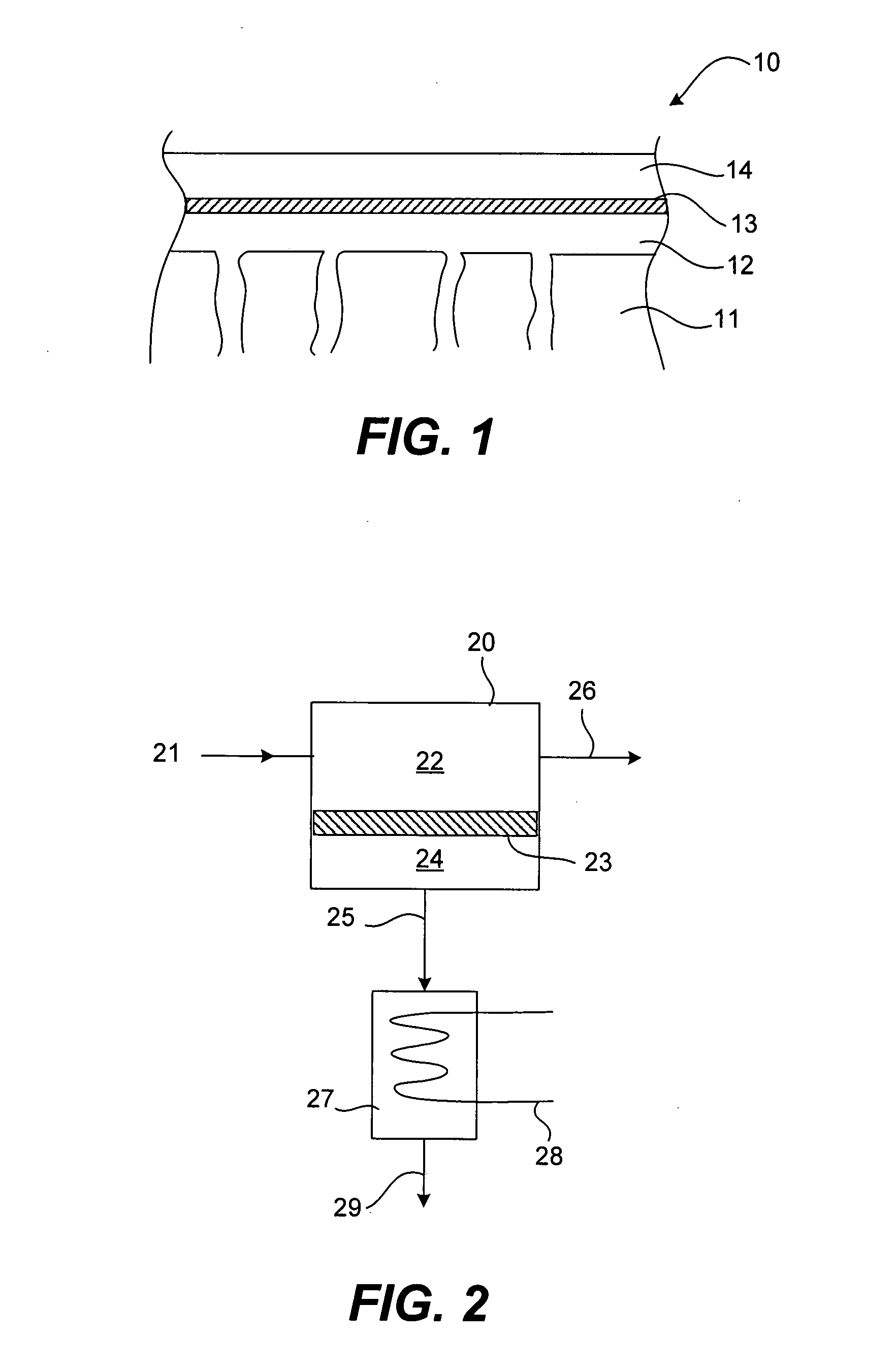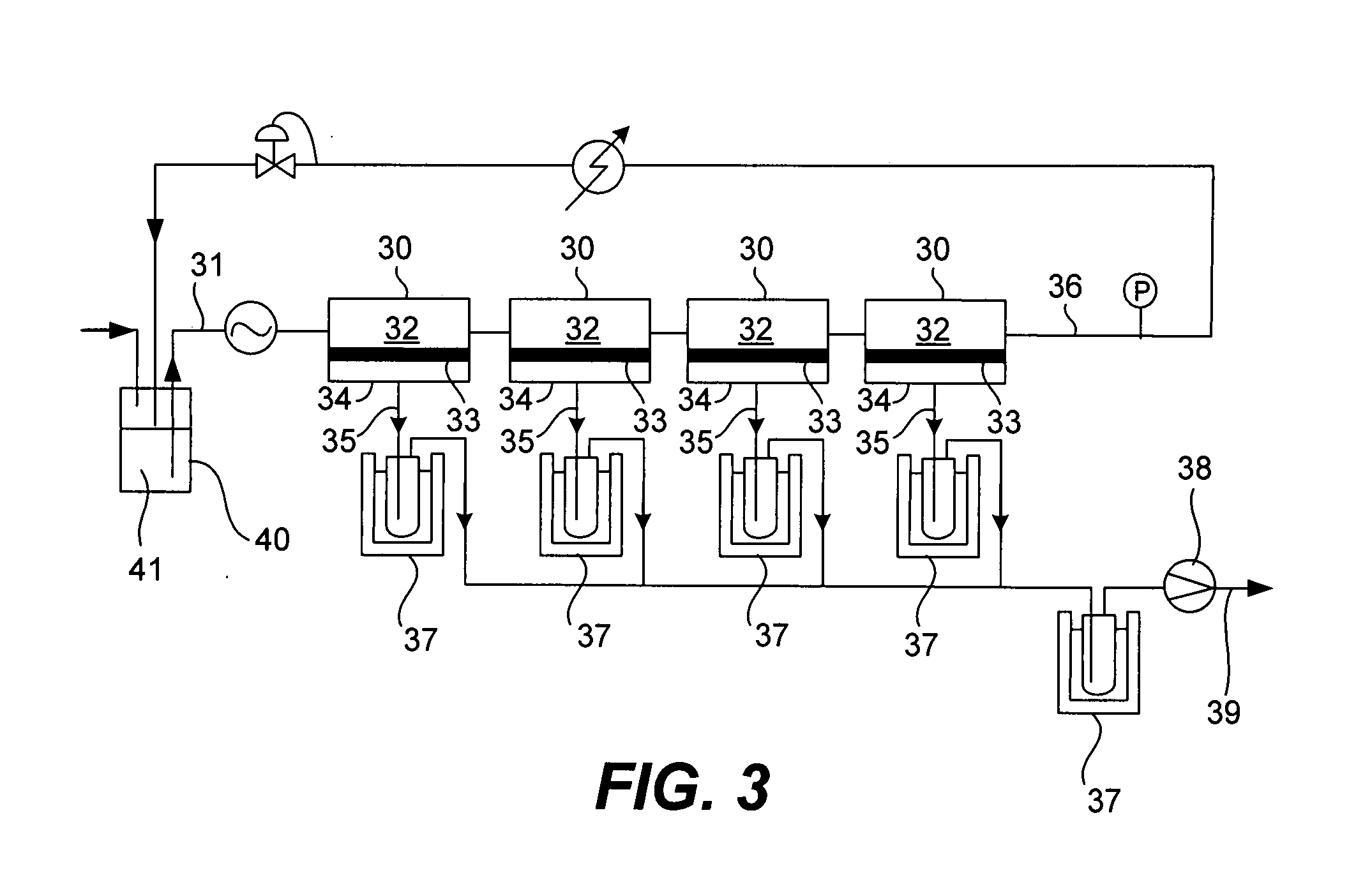Liquid-phase and vapor-phase dehydration of organic/water solutions
a technology of organic/water solution and liquid phase, which is applied in the direction of biofuels, distillation, separation processes, etc., can solve the problems of contaminating water with isopropanol solvent, energy-consuming use of bioethanol as a fuel, and inefficient bioethanol fermentation
- Summary
- Abstract
- Description
- Claims
- Application Information
AI Technical Summary
Benefits of technology
Problems solved by technology
Method used
Image
Examples
example 1
[0150]Three different sets of composite membranes having Hyflon®AD60, Cytop® and Teflon®AF selective layers were prepared by standard casting and coating techniques. For comparison purposes, crossslinked PVA pervaporation membranes were purchases from cm-Celfa Membrantrenntechnik, of Seewen-Schwyz, Switzerland. These membranes are representative of good quality pervaporation membranes in current commercial use. A series of permeation experiments using apparatus similar to that shown in FIG. 3 was carried out with each type of membrane on feed solutions containing various concentrations of water in ethanol. FIG. 5 compares the pervaporation performances of the Hyflon®AD membranes and Celfa membranes for separating ethanol / water mixtures. Perfluoro polymer membranes display good separation performance, regardless of the water concentration in the feed; the permeate water concentration is substantially higher than the feed water concentration across the entire range ...
example 2
[0151]A set of experiments was performed to evaluate the performance of the Hyflon® AD60 membranes in dehydrating acetic acid. The results are summarized in FIG. 7. As can be seen, the vapor-liquid equilibrium is close to azeotropic over the entire concentration range, making separation by distillation very difficult. In contrast, the membranes are highly selective for water over acetic acid, and can produce a permeate with a very high water concentration even when the feed contains only a small amount of water. As with the ethanol dehydration tests, the membrane performance remains good at high feed water concentrations.
example 3
Isopropanol Dehydration
[0152]A set of experiments was performed to evaluate the performance of the Hyflon® AD60 membranes in dehydrating isopropanol. The results are shown in Table 2. In each case, the membrane was able to retain essentially all the isopropanol in the residue and permeate only water, within the limits of accuracy of the equipment. Results using Hyflon®AD60 membranes are compared with results using Celfa crosslinked PVA membranes in FIG. 8. As can be seen by the absence of isopropanol in the permeate, the Celfa membranes provide good separation performance down to about 80 wt % isopropanol. At lower isopropanol concentration (higher water concentration) in the feed solution, the separation performance declines and increasingly large amounts of isopropanol permeate the membrane. In contrast, the Hyflon®AD membranes provide complete separation at all water concentrations.
TABLE 2Pervaporation of Isopropanol / Water Mixtures througha Hyflon ® AD60 Composite Membrane.Temper...
PUM
| Property | Measurement | Unit |
|---|---|---|
| Temperature | aaaaa | aaaaa |
| Temperature | aaaaa | aaaaa |
| Temperature | aaaaa | aaaaa |
Abstract
Description
Claims
Application Information
 Login to View More
Login to View More - R&D
- Intellectual Property
- Life Sciences
- Materials
- Tech Scout
- Unparalleled Data Quality
- Higher Quality Content
- 60% Fewer Hallucinations
Browse by: Latest US Patents, China's latest patents, Technical Efficacy Thesaurus, Application Domain, Technology Topic, Popular Technical Reports.
© 2025 PatSnap. All rights reserved.Legal|Privacy policy|Modern Slavery Act Transparency Statement|Sitemap|About US| Contact US: help@patsnap.com



